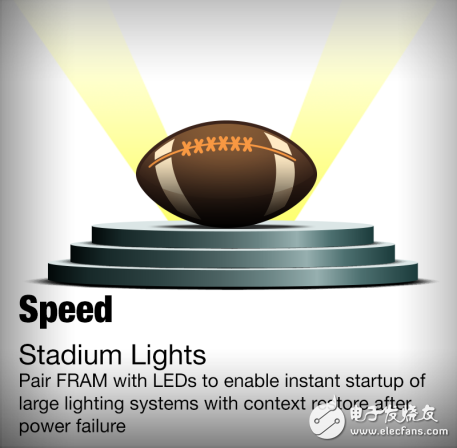In 2013, the world's largest sporting event was delayed by 34 minutes due to a power outage. The reason for this delay is the use of older lighting technologies that require a cooling time to continue and require a warm-up period to achieve a full output level. This long delay can be shortened by using a low power LED lighting solution from Ephesus LighTIng Inc. These solutions provide wireless real-time control with on/off, dimming, sequencing, and other effects. Such implementations are relatively new to the market. Compared to many traditional systems, there are many advantages in terms of energy efficiency and functionality, but some additional requirements for these systems need to be considered. In the event report, hundreds of cameras may be required to be shot throughout the venue, but this effect requires hundreds of wirelessly controlled luminaires to maintain low latency for fast (at least invisible to the human eye) switching. In addition, these systems consume much less energy when turned on than other solutions, and ultra-low power consumption helps to meet energy requirements when the lamp is turned off. In addition, safety is an important requirement as these lights should only be controlled by the venue operations team. In the Ephesus system, the Anaren Air module (TI-based 1 GHz CC1101 RF transceiver) is paired with an ultra-low-power MSP430FRxx FRAM microcontroller designed to ensure low-power wireless lighting control. Mark Bowyer, Director of Wireless Business Development at Anaren, talks about the role of MSP in the system: "The reason for choosing this system is the FRAM in the device. Since power interruption and power purity inconsistency are a long-lasting tug-of-war, we need to be able to keep the basic commands and control code in the 'e-ink' style library. As a result, we can retain system reboots and field command sets in ROM-style storage media with flash access and speed characteristics while meeting our minimum power requirements for sleep mode." In systems like the one described above, FRAM offers several advantages. Combined with the non-volatile, write speed and low power consumption of our FRAM MCUs and integration with AES modules and memory protection units, devices such as the MSP430FR5969 MCU stand out from the competition. Are you interested in building such a wireless system? Consider starting with the new MSP-EXP430FR6989 LaunchPad and 430BOOST-CC110L RF BoosterPack. So why not try to achieve state recovery after a power failure with the new Compute Through Power Loss (CTPL) FRAM utility? Digital-to-analog converter, also known as D/A converter, or DAC for short, is a device that converts digital quantities into analog. The D/A converter is basically composed of 4 parts, namely the weight resistor network, operational amplifier, reference power supply and analog switch. A digital-to-analog converter is generally used in an analog-to-digital converter. The analog-to-digital converter is an A/D converter, or ADC for short. It is a device that converts a continuous analog signal into a discrete digital signal. Dac Cable,Dac Aoc Cable,Direct Attach Cable,Direct Attach Copper Cable Nanjing Jisu Shitong Technology Co., Ltd , https://www.netairs.com